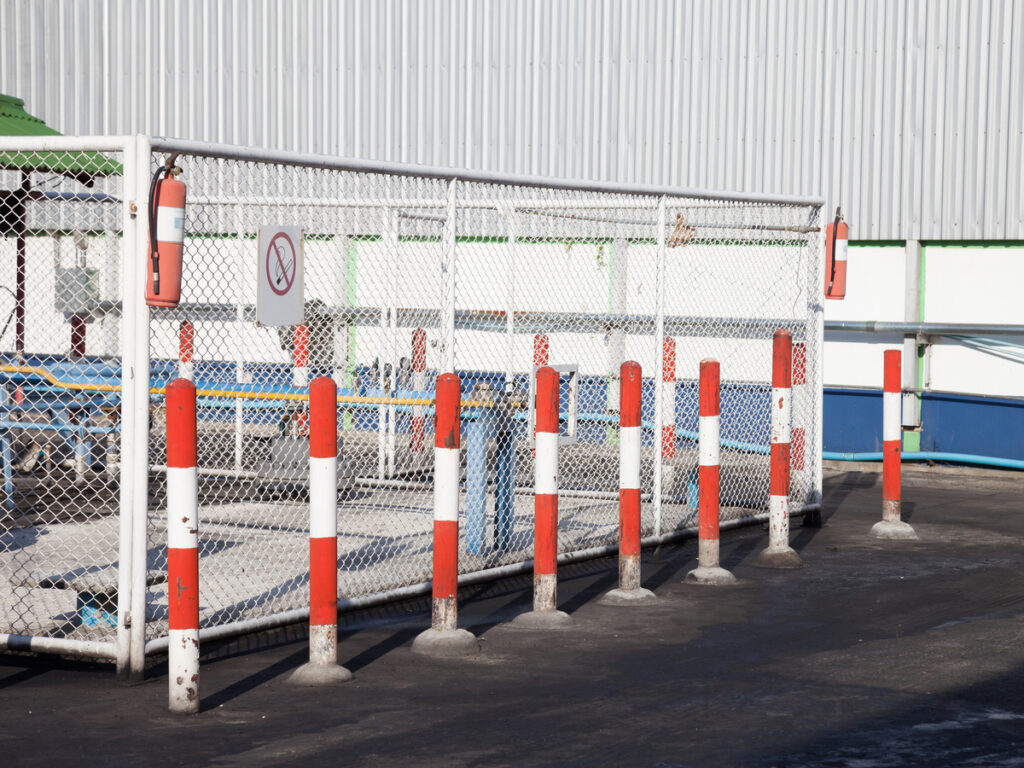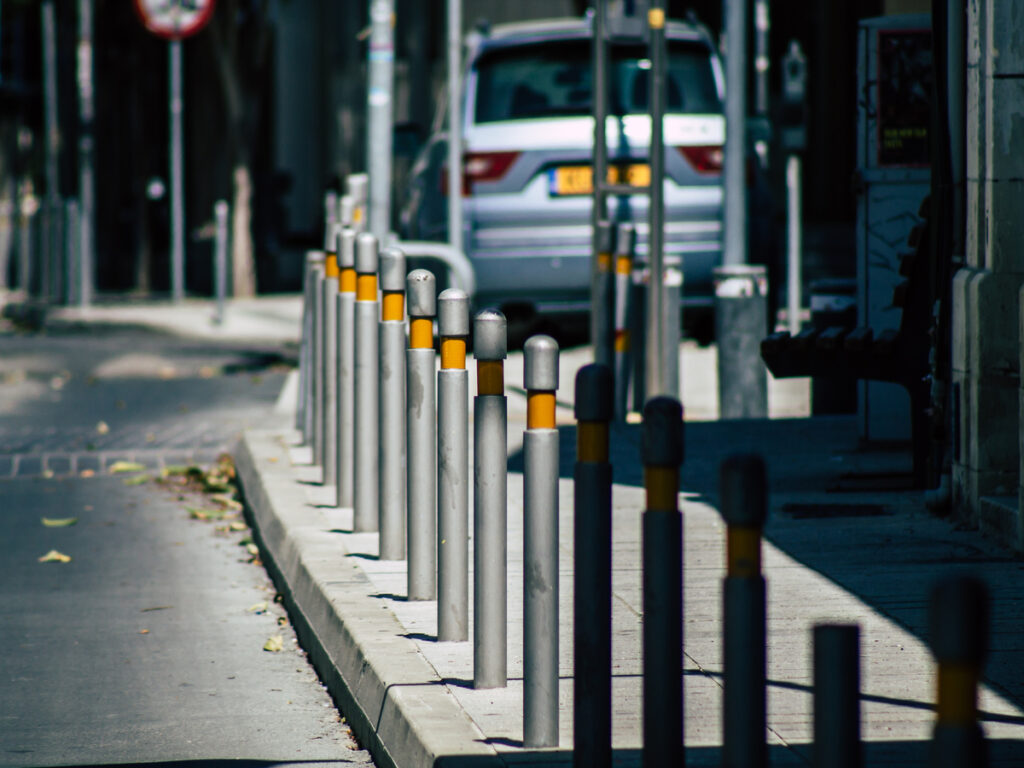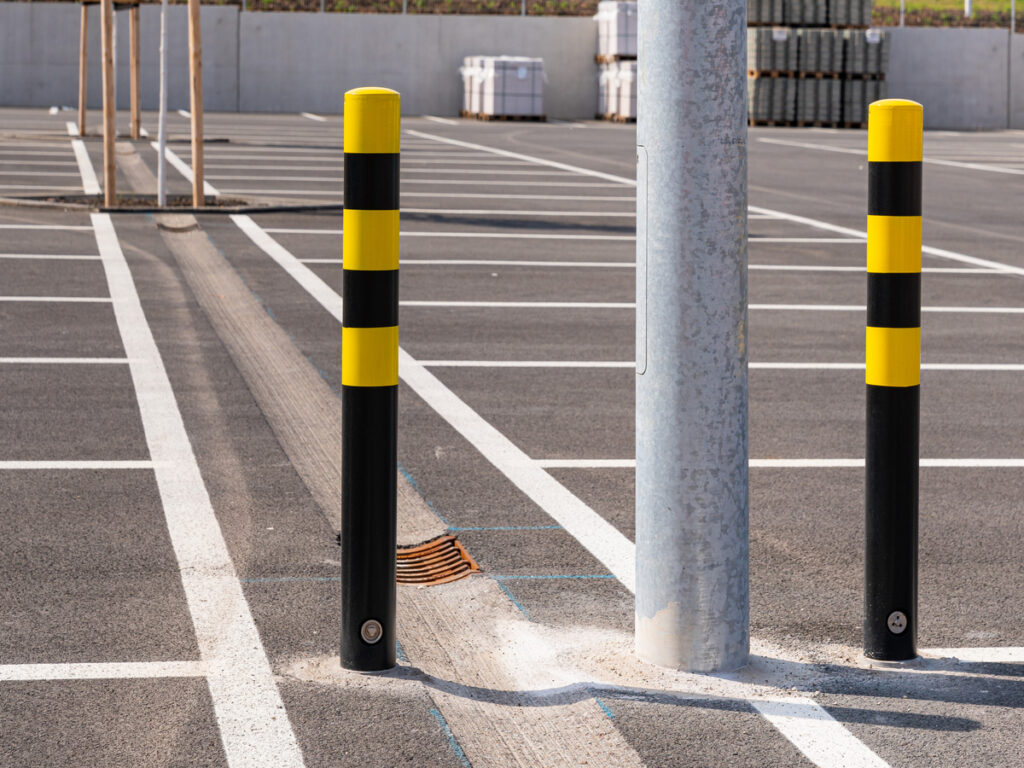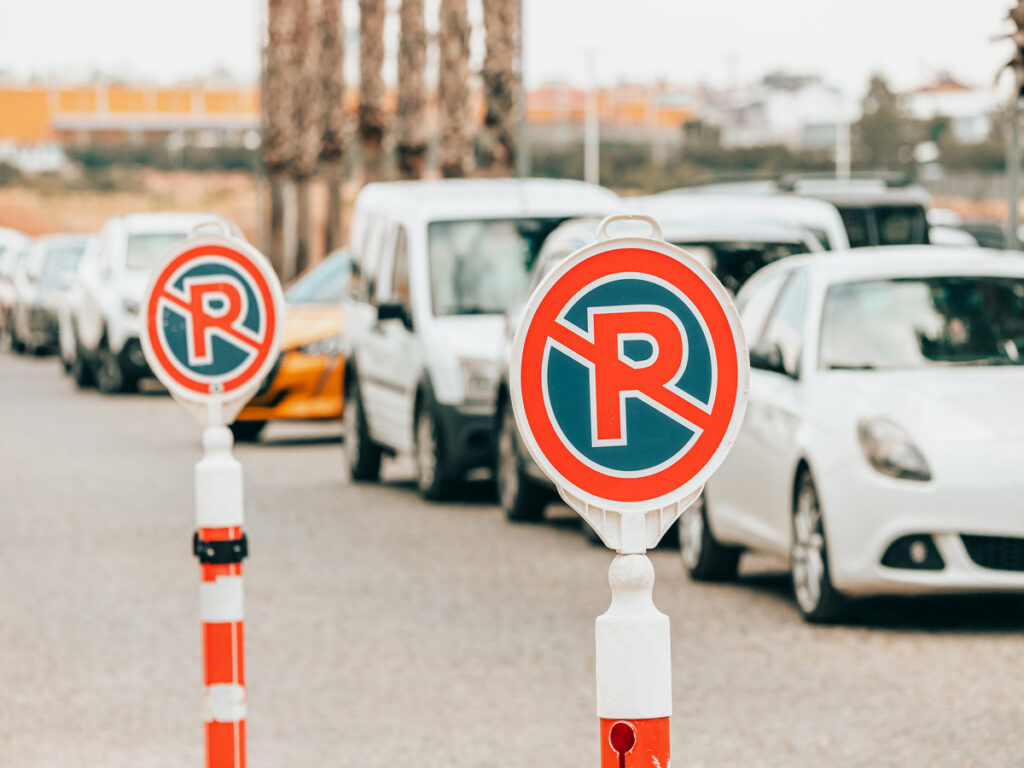
Il trattamento della superficie del metallo aiuta a durare più a lungo e apparire meglio. Protegge dalla ruggine, danno, e tempo, rendendolo importante per gli edifici, veicoli, e progetti di città. Metodi come galvanizzazione, rivestimento, e lucidare risolvere diversi problemi. Per esempio, I paletti zincati fermano la ruggine vicino agli oceani, e le superfici lucide sembrano belle nelle aree di business.
Il mercato del trattamento della superficie metallica sta crescendo rapidamente. Valeva la pena $12.78 miliardi di 2022 e può raggiungere $20.07 miliardi di 2030. Industrie come i produttori di auto e aerei hanno bisogno di questi trattamenti. Rendono il metallo più forte e funzionano meglio in condizioni difficili. I rivestimenti possono risparmiare carburante abbassando il peso, E i nuovi tipi sono migliori per l'ambiente.
Takeaway chiave
- Galvanizzare ferma il metallo dalla ruggine aggiungendo zinco. Funziona bene all'aperto con il tempo difficile.
- Rivestimenti, Come i rivestimenti in polvere, rendere il metallo più forte e avere un aspetto migliore. Aggiungono colore e proteggono dalla ruggine.
- La lucidatura rende il metallo lucido e pulito. Aiuta a mantenerlo pulito e riduce i danni.
- Scegli il trattamento giusto in base a dove viene utilizzato, costo, E quanto è forte per essere.
- Pulire e controllare le superfici trattate spesso per farle durare più a lungo e funzionare bene.
Comprensione della galvanizzazione

La zincatura è un modo comune per proteggere il metallo dalla ruggine. Aiuta il metallo a durare più a lungo aggiungendo uno strato di zinco. Questo rivestimento di zinco blocca il danno dall'ambiente. Tra i metodi, La galvanizzazione a caldo funziona meglio e dura più a lungo.
Il processo di galvanizzazione a caldo
Galvanizzazione a caldo è semplice ed efficace. Primo, L'acciaio viene pulito per rimuovere lo sporco e la ruggine. Prossimo, È immerso in zinco fuso riscaldato a 840 ° F (449°C). Questo crea un forte legame tra zinco e acciaio. Lo strato di zinco smette di ruggine e protegge il metallo.
Questo processo consente di risparmiare energia quando viene eseguito con attenzione. Usando abbastanza zinco può ridurre l'uso di energia di 39%. È anche ecologico per i grandi progetti. Col tempo, Lo zinco forma una patina, che aggiunge ulteriore protezione. Ciò è particolarmente utile in luoghi difficili come vicino agli oceani o alle fabbriche.
Vantaggi dell'acciaio zincato
L'acciaio zincato ha molti vantaggi. Ecco quelli principali:
- Ottima protezione della ruggine: Gestisce l'umidità, sale, e altri elementi dannosi. Nelle aree rurali, dura 50 anni. Nelle città o nelle vicinanze degli oceani, dura 20 A 25 anni o più.
- Conveniente: Costa meno in anticipo e ha bisogno di poca manutenzione dopo.
- Forte e autorigenerante: Se graffiato, Il rivestimento di zinco si fissa, Mantenere l'acciaio al sicuro.
- Utile ovunque: Funziona per molte cose, Come edifici e veicoli.
L'acciaio zincato dura a lungo. Per esempio, nelle aree suburbane, Può rimanere forte fino a 97 anni. Questo lo rende una scelta intelligente per i progetti che necessitano di durata a lungo termine.
| Tipo di ambiente | Tempo per la prima manutenzione (TFM) | Stima della longevità (Anni) |
|---|---|---|
| Industriale | 72 A 73 | 72 A 73 |
| Marine tropicale | 75 A 78 | 75 A 78 |
| Marine temperata | 86 | 86 |
| Suburbano | 97 | 97 |
| Rurale | Sopra 100 | Sopra 100 |
Applicazioni di bilanci zincati
I paletti zincati sono forti e proteggono la proprietà in molti luoghi. Il loro rivestimento di zinco li rende grandi per l'uso all'aperto. Restano bene contro il maltempo. Ecco alcuni modi in cui vengono utilizzati:
- Case: Le persone usano i bilanci zincati per bloccare i vialetti e mantenere le auto al sicuro. Resistono alla ruggine, anche in aria salata vicino alla costa.
- Aziende: Le aziende li mettono nei parcheggi per fermare il furto e il danno. Sono duri e non hanno bisogno di molta cura.
- Fabbriche: I bollari proteggono macchine ed edifici da impatti pesanti. Sopravvivono anche in duro, aree corrosive.
I bilanci zincati sono utili anche nelle città e negli spazi pubblici. Sono forti e durano a lungo, rendendoli popolari sia per le città che per i proprietari privati.
| Area di applicazione | Descrizione |
|---|---|
| Protezione residenziale del vialetto | Un proprietario di abitazione in una zona costiera ha utilizzato i paletti in acciaio inossidabile di livello marino per proteggere i veicoli dal furto e resistere all'aria salata. Il design retrattile ha consentito l'accesso flessibile per l'uso familiare. |
| Sicurezza del parcheggio commerciale | Un'azienda ha installato bilanci zincati per prevenire parcheggi non autorizzati e proteggere da potenziali attacchi di raid RAM. |
Basta zincata Migliorare la sicurezza e ridurre i costi di manutenzione. Sono una scelta intelligente per l'uso a lungo termine.
Sfide nella zincatura e nelle soluzioni
La zincatura è ottima per fermare la ruggine, Ma ha sfide. Questi problemi possono ridurre la qualità dello strato di zinco. Conoscere i problemi e risolverli aiuta a migliorare i tuoi progetti.
1. Spessore di rivestimento irregolare
A volte, Lo strato di zinco non è nemmeno. Questo accade se l'acciaio ha sporcizia o dossi. Gli strati irregolari rendono alcuni punti più deboli e inclini alla ruggine.
Soluzione:
Pulisci l'acciaio ben prima di zincarsi. Usa acido o esplosione per rimuovere lo sporco e la ruggine. L'acciaio liscio aiuta lo stick di zinco uniforme.
2. Difetti di superficie dopo la zincatura
Potresti vedere punti difficili, gocciolamenti, o motivi in superficie. Questi difetti possono rendere l'acciaio cattivo o funzionare in modo meno efficace.
Soluzione:
Controlla il calore e il tempo di immersione per evitare difetti. Lascia che l'acciaio si scarichi correttamente per fermare i gocciolamenti. Per uno sguardo migliore, lucidare o levigare la superficie dopo la zincatura.
3. Formazione di ruggine bianca
La ruggine bianca è uno strato gessoso che si forma quando lo zinco incontra l'umidità. Non fa male subito ma può indebolire il rivestimento nel tempo.
Soluzione:
Conservare gli articoli zincati in luoghi asciutti con un buon flusso d'aria. Se lo stoccaggio è umido, Aggiungi uno strato protettivo per bloccare la ruggine bianca. Controlla spesso gli articoli per riparare la ruggine bianca presto.
Mancia: Ispezionare regolarmente oggetti immagazzinati per catturare rapidamente la ruggine bianca.
4. Deformare o distorsione dell'acciaio
Zinco caldo può piegare pezzi di acciaio sottili o lunghi. Questo è un problema per le parti che necessitano di forme esatte.
Soluzione:
Usa l'acciaio con spessore pari e disegni semplici. Preriscalda l'acciaio a una sollecitazione più bassa durante l'immersione. Parla con gli esperti del tuo design per evitare di deformarsi.
5. Problemi di compatibilità con determinate leghe
Alcuni tipi di acciaio non funzionano bene con la galvanizzazione. Gli acciai ad alto contenuto di silicio o fosforo possono causare rivestimenti spessi o fragili.
Soluzione:
Scegli l'acciaio fatto per la zincatura. L'acciaio a basso contenuto di silicio dà più fluido, strati più forti. Se insicuro, Chiedi a un esperto prima di iniziare.
6. Preoccupazioni ambientali
Galvanizing usa sostanze chimiche e zinco, che può danneggiare la natura se gestito. I rifiuti devono essere gestiti con cura per evitare danni.
Soluzione:
Scegli le strutture che seguono le regole ecologiche. Molte piante riciclano lo zinco e usano metodi di pulizia più sicuri. Questo aiuta il tuo progetto a rimanere verde.
Nota: La risoluzione di questi problemi fa durare più a lungo gli oggetti zincati. Risparmia anche nel tempo riducendo le riparazioni.
Risolvendo questi problemi, Ottieni risultati migliori dalla galvanizzazione. Sia per macchine o articoli all'aperto, Questi suggerimenti garantiscono prodotti forti e duraturi.
Esplorare i metodi di rivestimento
Rivestimento in polvere vs. Rivestimento di verniciatura
Quando si scegli tra polvere e rivestimenti di vernice, Pensa alla forza, Eco-friefness, e resistenza all'usura. I rivestimenti in polvere sono meglio della vernice in molti modi:
- Durano più a lungo e resistono a graffi, patatine, e sbiadimento.
- Non hanno sostanze chimiche dannose come i COV, Quindi sono più verdi.
- Danno un aspetto più fluido, Migliorare sia lo stile che la protezione.
I rivestimenti di vernice sono flessibili ma non così forti o ecologici come i rivestimenti in polvere. Per i progetti che necessitano di durata e bell'aspetto, Il rivestimento in polvere è l'opzione più intelligente.
Il processo di rivestimento ha spiegato
Il processo di rivestimento ha passi per renderlo forte e di lunga durata. Primo, Pulire la superficie per rimuovere lo sporco e il grasso. Prossimo, Applicare il rivestimento usando metodi di spruzzatura o immersione. Finalmente, La luce di calore o UV indurisce il rivestimento per renderlo solido.
I test sono importanti per verificare la qualità del rivestimento. Strumenti come tester di abrasione e camere a spruzzo saline per l'usura e la resistenza alla ruggine. Gli analizzatori a raggi X misurano quanto sia spesso il rivestimento. Questi passaggi assicurano che il rivestimento sia difficile e sembra buono.
| Metodo di test | Scopo |
|---|---|
| Tester di abrasione b-04 | Prova quanto bene il materiale resiste all'usura e all'attrito. |
| Camere di prova di corrosione a spruzzo salino | Controlla come il rivestimento gestisce la ruggine in condizioni difficili. |
| Analizzatore a film sottile | Misura quanto sia spesso lo strato di rivestimento. |
Vantaggi del rivestimento per le superfici metalliche
Il rivestimento rende il metallo più forte e più bello. Protegge dai graffi, ruggine, e danni meteorologici. In luoghi caldi o bagnati, I rivestimenti aiutano il metallo a durare più a lungo.
I rivestimenti più spessi danno una migliore protezione. Per esempio, Un rivestimento di 125 micron può durare per decenni in aree difficili. I rivestimenti migliorano anche look, Offrire disegni che abbinano gli stili di città.
| Spessore del rivestimento (micron) | Vita prevista (Se ridotto a mezzo spessore) |
|---|---|
| 14 | Utilizzato per prodotti sottili o elettrogalvanizzati. |
| 50 | Comune per rivestimenti di zinco più spessi applicati continuamente. |
| 125 | Trovato in batch hot dip galvanizzazione per acciaio moderno. |
Scegliere il rivestimento giusto mantiene il metallo forte e bello per anni.
Usi comuni di Bollardi rivestiti
I bilanci rivestiti sono utili e hanno un bell'aspetto in molti luoghi. La loro finitura dura e la capacità di abbinare i disegni li rendono grandi per usi diversi. Ecco alcuni esempi:
- Aree urbane: I proiettili rivestiti si adattano bene agli spazi cittadini. Proteggono i marciapiedi, piste ciclabili, e parchi pubblici. Il loro rivestimento forte li fa sembrare belli anche con un uso intenso.
- Posizioni commerciali: I negozi e gli uffici utilizzano i bilanci rivestiti per proteggere gli ingressi, parcheggi, e aree di consegna. Lo strato resistente ai raggi UV li aiuta a rimanere luminosi sotto il sole.
- Fabbriche e magazzini: Bollardi rivestiti Mantieni le macchine e le pareti al sicuro dai dossi. Resistono alla ruggine, rendendoli affidabili in condizioni difficili.
- Parchi e campi sportivi: Le aree ricreative utilizzano i provinciali rivestiti per contrassegnare gli spazi e il traffico diretto. Puoi scegliere colori che corrispondono all'ambiente circostante.
- Ospedali e scuole: I proiettili rivestiti migliorano la sicurezza controllando le auto e proteggendo le persone che camminano nelle vicinanze.
Scegliere i bilanci rivestiti ti dà forte, protezione duratura e un aspetto ordinato per le tue esigenze.
Risolvere problemi di rivestimento
I rivestimenti funzionano bene ma possono avere alcuni problemi. Conoscere questi problemi ti aiuta a ottenere i migliori risultati.
- Peeling o rottura: I rivestimenti possono sbucciare o scheggiare se applicato e sbagliato. Pulire la superficie bene prima del rivestimento per renderla meglio e durare più a lungo.
- Preoccupazioni ambientali: Il rivestimento utilizza sostanze chimiche che richiedono un'attenta gestione. L'uso di metodi di risciacquo migliori e agenti ecologici riduce gli sprechi e aiuta l'ambiente.
- Spreco di materiale: Il rivestimento extra può causare rifiuti e strati irregolari. Lascia che il rivestimento si esaurisca e usi temperature più elevate per risolvere questo problema. Questi passaggi rendono il rivestimento più fluido.
- Rust in aree difficili: I rivestimenti da soli potrebbero non fermare la ruggine in luoghi salati o inquinati. Combinando i rivestimenti con zincatura dà una protezione più forte contro la corrosione.
L'industria del rivestimento continua a migliorare per rendere i processi più sicuri e più verdi. Lavorare insieme, I produttori e gli utenti trovano modi migliori per risolvere i problemi. Imparando e utilizzando pratiche intelligenti, Puoi ottenere i migliori risultati.
Mancia: Pulisci e controlla le superfici rivestite spesso per mantenerle in gran forma per anni.
Lucidare per un aspetto migliore e prestazioni

La lucidatura rende le superfici metalliche belle e funzionano meglio. È molto importante per l'acciaio inossidabile nelle industrie che necessitano di resistenza, pulizia, E bell'aspetto. La lucidatura aiuta a fermare la ruggine, riduce l'usura, e migliora l'aspetto del metallo.
Come viene lucidato l'acciaio inossidabile
La lucidatura in acciaio inossidabile ha passi per renderlo liscio e lucido. Primo, La superficie viene pulita per rimuovere lo sporco. Poi, I punti ruvidi vengono levigati usando abrasivi. Metodi come l'elettropoling o la lucidatura meccanica sono scelti in base alla finitura necessaria. Finalmente, La superficie è lucidata per renderla brillante.
Il successo della lucidatura dipende dal metodo utilizzato. Elettropolishing può fermare la ruggine ma potrebbe rendere la superficie più ruvida in alcuni casi. La ricerca mostra la lucidatura con una sospensione speciale di silice produce superfici più fluide e una migliore resistenza alla ruggine rispetto all'elettropolistica.
Tipi di finiture lucide
Diverse finiture vengono utilizzate per varie esigenze. Ogni tipo ha un suo aspetto e un uso.
| Tipo di finitura | Descrizione | Usi |
|---|---|---|
| NO. 3 Fine | Superficie semi-shiny | Strumenti da latte, serbatoi di birrificio |
| NO. 4 Fine | Finitura satinata con linee | Porte dell'ascensore, cime della cucina |
| NO. 8 Fine | Superficie lucida a specchio | Gioielli, segni, arredamento dell'edificio |
Queste finiture aiutano a fermare la ruggine, Rimani pulito, E un bell'aspetto. Per esempio, NO. 4 Le finiture sono ottime per spazi puliti, mentre no. 8 Le finiture sono le migliori per la decorazione.
Perché il metallo lucido è utile
La lucidatura rende il metallo più forte e più bello. Le superfici lisce sono più facili da pulire e non raccogliere lo sporco. Il metallo lucido ferma anche i batteri, Il che è importante per le industrie del cibo e della medicina.
Le industrie di auto e aeroplani beneficiano molto della lucidatura. Nelle auto, abbassa l'attrito e l'usura, far durare più a lungo le parti. Negli aerei, migliora la velocità e la forza, mantenendoli al sicuro in condizioni difficili.
| Industria | Vantaggi della lucidatura | Fatti chiave |
|---|---|---|
| Auto | Migliora l'aspetto delle parti, riduce l'usura e l'attrito. | Cresce la domanda di auto elettriche e materiali leggeri. |
| Aeroplani | Mantiene le parti al sicuro, migliora la velocità, gestisce condizioni difficili. | La crescita deriva da più viaggi aerei e da nuovi mercati. |
La lucidatura impedisce anche la ruggine e migliora l'aspetto del metallo. Per esempio, i vecchi oggetti in metallo lucidati per i musei mostrano più dettagli e sembrano più belli da esporre.

Scegliere il giusto metodo di lucidatura ti darà un metallo forte e dall'aspetto gradevole che durerà a lungo.
Applicazioni dei dissuasori lucidati
I dissuasori lucidati sono resistenti e sembrano eleganti. Sono ottimi per i luoghi in cui la sicurezza e l'aspetto sono entrambi importanti. La loro superficie lucida migliora l'aspetto degli spazi mantenendoli al sicuro.
- Aree commerciali di alto livello: Questi bollari sembrano moderni negli uffici, centri commerciali, e hotel. La loro finitura lucida corrisponde a nuovi edifici e aiuta a guidare il traffico in sicurezza.
- Piazze pubbliche e parchi: Bolletti lucidati si adattano bene ai progetti di città. Sembrano puliti e resistono al maltempo, rendendoli perfetti per l'uso all'aperto.
- Hub di trasporto: Gli aeroporti e le stazioni ferroviari li usano per controllare le auto e proteggere gli ingressi. La loro superficie lucida è facile da vedere, anche in luce fioca.
- Assistenza sanitaria ed educativa: Gli ospedali e le scuole utilizzano billari lucidati per sicurezza e ordine. La loro superficie liscia rimane pulita e ferma i germi, Mantenere l'area igienica.
Mancia: Scegli Bolletti in acciaio inossidabile lucido per luoghi che necessitano di stile e pulizia. Durano a lungo e hanno bisogno di poca cura.
Sfide e soluzioni di manutenzione
Bolled Bishing ha bisogno di cura di rimanere lucenti e utili. Senza pulire, Possono sporcarti o perdere il loro splendore. Ecco come risolvere i problemi comuni:
- Sporco e impronte digitali: Smudges e sporcizia si presentano facilmente su superfici lucidate.
- Soluzione: Pulirli settimanalmente con un panno morbido e sapone delicato. Non usare detergenti ruvidi che possono grattarli.
- Macchie di ruggine: L'acciaio inossidabile può arrugginire in aree salate o bagnate.
- Soluzione: Pulire la ruggine con un detergente in acciaio inossidabile o una miscela di sodio da bicarbonatori. Aggiungi uno strato protettivo per impedire alla ruggine di tornare.
- Graffi: Colpi pesanti o strumenti di pulizia errati possono graffiare la superficie.
- Soluzione: Usa uno smalto delicato per fissare piccoli graffi. Per quelli grandi, Chiedi aiuto a un professionista.
- Agenti atmosferici: Sole e pioggia possono rendere la superficie opaca nel tempo.
- Soluzione: Applicare un rivestimento protettivo UV per mantenere la lucentezza e far durare più a lungo.
Nota: Controlla spesso i bilanci lucidati per individuare i problemi presto. Le cure regolari li fanno apparire bene e funzionano bene per anni.
Confrontare i trattamenti superficiali
Resistenza alla durata e corrosione
Quando si sceglie un trattamento superficiale, Pensa alla durata e alla protezione della ruggine. Ogni metodo funziona meglio in determinati luoghi e usi. La zincatura è ottima per fermare la ruggine. Lo strato di zinco blocca l'acqua e l'aria di raggiungere il metallo. Questo lo rende perfetto per gli articoli all'aperto in maltempo o aree salate.
Rivestimenti, Come i rivestimenti in polvere, Rendi le superfici difficili e a prova di scratch. Ma la loro protezione dalla ruggine può differire. Gli studi sulle leghe di alluminio mostrano rivestimenti in polvere di sabbia e film anodizzati duri resistono alla ruggine meglio in luoghi salati rispetto ai rivestimenti in polvere piatta. I film anodizzati duri rimangono forti contro la ruggine nel tempo, rendendoli buoni per l'uso a lungo termine.
La lucidatura in acciaio inossidabile rende le superfici lisce e smette di ruggine. Semplifica anche la pulizia. Mentre la lucidatura non protegge così profondamente come la galvanizzazione, È ottimo per i luoghi che necessitano di superfici pulite e brillanti.
Appello e personalizzazione estetica
I trattamenti di superficie non proteggono solo: cambiano anche l'aspetto del metallo. Rivestimenti, Soprattutto rivestimenti in polvere, Lasciarti scegliere colori e finiture per abbinare i disegni. Questo li rende popolari nelle città in cui sembra avere importanza.
Le finiture lucide danno un look moderno e elegante. Un no a specchio. 8 Fine aggiunge lusso a uffici e centri commerciali. Un raso no. 4 Fine sembra pulito e professionale. I proiettori in acciaio inossidabile lucido sono perfetti per luoghi di fascia alta come hotel e piazze.
Le superfici zincate sembrano semplici ma forti. La finitura opaca con motivi di zinco si adatta alle fabbriche e ai siti di costruzione. Sebbene non personalizzabile come i rivestimenti o la lucidatura, È pratico e dura a lungo.
Considerazioni sui costi e sulla manutenzione
Il costo è importante quando si sceglie un trattamento superficiale. La galvanizzazione è conveniente e dura a lungo. Rallenta la ruggine, estende la vita del prodotto, e ha bisogno di poca cura. Per esempio, L'acciaio zincato nelle aree rurali può durare 100 anni quasi senza manutenzione.
Rivestimenti, Come i rivestimenti in polvere, sono economici e proteggono bene. Costano meno di altri trattamenti e necessitano di poca manutenzione. Questo li rende fantastici per le città e le imprese.
La lucidatura costa all'inizio di più, ma risparmia più tardi. Le superfici lucidate rimangono pulite e lucide con poco sforzo. Sono una scelta intelligente per i luoghi affollati in cui l'aspetto e la pulizia contano.
Pensa a questi punti per scegliere il miglior trattamento per il tuo budget, bisogni di cura, e obiettivi del progetto.
Scegliere il miglior trattamento per il tuo progetto
La scelta del giusto trattamento superficiale dipende dalle tue esigenze. Ogni metodo—zincatura, rivestimento, O lucidare—Sa benefici speciali per usi diversi. Decidere, Pensa alla durata, sguardo, e costo.
Fare un passo 1: Controlla l'ambiente
Pensa a dove verrà utilizzato il metallo. Luoghi diversi richiedono una protezione diversa. Per esempio:
- Aree costiere: Il sale in aria provoca rapidamente la ruggine. Zincatura con lo zinco si ferma bene.
- Città: Sembra che importasse più nelle aree urbane. Rivestito in polvere O lucido le finiture proteggono e sembrano belle.
- Fabbriche: Le condizioni difficili necessitano di forti trattamenti. Zincatura o i rivestimenti spessi funzionano meglio.
Mancia: Abbina il trattamento alle sfide della posizione.
Fare un passo 2: Conosci le tue priorità
La cosa più importante, la lunghezza, stile, o budget? Ogni trattamento è buono per motivi diversi:
- Forza: Zincatura dura il più lungo, Soprattutto all'aperto o nelle aree salate.
- Stile: Lucido Le finiture sembrano moderne e lucide, Ottimo per i luoghi fantasiosi. Rivestimenti in polvere Lasciarti scegliere i colori per abbinare i disegni.
- Budget: Zincatura è più economico per l'uso a lungo termine. I rivestimenti e la lucidatura costano più in anticipo ma risparmiano in seguito.
Fare un passo 3: Usa gli strumenti per decidere
Usa gli strumenti decisionali per scegliere l'opzione migliore. Questi strumenti confrontano cose come il costo, forza, e morbidezza.
Fare un passo 4: Mescola i trattamenti per risultati migliori
A volte, I trattamenti di miscelazione funziona meglio. Per esempio:
- Zincatura + Rivestimento in polvere: Si ferma ruggine e sembra buono. Ottimo per le città costiere che necessitano sia di forza che di stile.
- Lucidare + Rivestimento: Il metallo lucido con uno strato protettivo resiste a graffi e sporco. Perfetto per luoghi affollati come centri commerciali o aeroporti.
Nota: La miscelazione dei trattamenti costa all'inizio di più ma risparmia in seguito alle riparazioni.
Fare un passo 5: Prova e guarda
Dopo aver scelto un trattamento, testalo in condizioni reali. Usa strumenti come i tester Rust per verificare come funziona bene. Continua a controllare nel tempo per assicurarti che rimanga forte.
Seguendo questi passaggi, Puoi scegliere il miglior trattamento superficiale. Se vuoi una durata di lunga durata, elegante, o opzioni economiche, Conoscere le tue scelte ti aiuta a ottenere i migliori risultati.
Sfide comuni e soluzioni pratiche
Fermare la ruggine Zincato Superfici
Protezione zincato Le superfici dalla ruggine sono molto importanti. Ciò è particolarmente vero in luoghi bagnati o salati. Per fermare la ruggine, Pulisci l'acciaio ben prima zincatura. Rimuovere lo sporco e la ruggine usando acido o esplosione. Una superficie liscia aiuta meglio lo zinco.
Come memorizzi zincato Anche gli articoli contano. Tienili asciutti, spazi ariosi per evitare la ruggine bianca. Se devi conservarli in aree umide, Aggiungi un rivestimento anti-russo temporaneo. Controlla gli articoli spesso per trovare e fissare la ruggine presto.
Per aree difficili come coste o fabbriche, Usa rivestimenti extra con zincatura. Questo doppio strato rende l'acciaio durare più a lungo e rimane forte contro il tempo duro.
Fissaggio di peeling o scheggiature in rivestimenti
I rivestimenti possono sbucciare o scheggiare se non si attaccano bene o lo stress del viso. Per prevenire questo, Preparare attentamente la superficie prima del rivestimento. Metodi speciali come PECVD Migliora il legame e smetti di sbucciare.
I test aiutano a garantire che i rivestimenti siano forti. Usa strumenti come il test del tampone di cotone per verificare l'usura. Il test incrocio misura quanto bene i rivestimenti. Altri test, Come il test di piega del mandrino, Controllare la flessibilità, Mentre il test di spruzzatura salina guarda la resistenza alla ruggine. Questi test trovano punti deboli e migliorano i rivestimenti.
Scegli i rivestimenti che resistono agli impatti per evitare il peeling durante gli shock. Difficile, I rivestimenti flessibili maneggiano lo stress meglio. Processi come il rivestimento della bobina danno una copertura uniforme e un'adesione più forte.
| Nome del test | Cosa controlla |
|---|---|
| Test di tampone in cotone | Controlla l'usura strofinando un tampone imbottito chimico sul rivestimento. |
| Test di adesione incrociata | Misura quanto bene il rivestimento si attacca usando un motivo a griglia. |
| Test di impatto | Test di forza lasciando cadere una palla sul rivestimento. |
| Test di piega del mandrino | Controlla la flessibilità piegando il rivestimento su uno strumento curvo. |
| Test di spruzzatura salina | Test della resistenza alla ruggine esponendo il rivestimento alla nebbia salata. |
| Test di spessore del film | Misura se il rivestimento è abbastanza spesso per buone prestazioni. |
Mantenere le superfici lucide lucide
Le superfici lucide hanno bisogno di cure regolari per rimanere lucenti e senza ruggine. Lo sporco e le impronte digitali possono renderli opachi. Pulirli settimanalmente con un panno morbido e sapone delicato. Non usare detergenti ruvidi che potrebbero graffiare la superficie.
La ruggine può presentarsi in luoghi salati o bagnati. Usa detergenti in acciaio inossidabile o bicarbonato di sodio per rimuoverlo. L'aggiunta di uno strato protettivo impedisce alla ruggine di tornare. Per piccoli graffi, Usa uno smalto delicato. I grandi graffi potrebbero aver bisogno di aiuto per esperti.
Sole e pioggia possono sbiadire le superfici lucidate nel tempo. Un rivestimento protettivo UV li mantiene lucenti e resistenti alla ruggine. Le cure regolari mantengono le superfici lucide che hanno un bell'aspetto e funzionano bene per anni.
Mancia: Controlla le superfici lucidate spesso per individuare i problemi in anticipo e tenerli in ottima forma.
Trattamenti di superficie metallica come zincatura, rivestimento, E lucidare Ognuno ha usi speciali. Zincatura si ferma ruggine e dura molti anni in luoghi difficili. Rivestimento rende il metallo più forte, sembra migliore, e offre scelte di design. Lucidare liscia le superfici e dà una fantasia, Look brillante.
La raccolta del giusto trattamento dipende dal materiale e dalle esigenze. Per esempio, combattimenti di rivestimento liquido arrugginito e rende il metallo più duro. La pausa pulisce le superfici e aiuta i rivestimenti ad attaccare meglio. Macinare e lucidare rendono le superfici lisce, mentre il rivestimento spray termico protegge dall'usura.
Mancia: Parla con gli esperti per scegliere il miglior trattamento per il tuo progetto. Le soluzioni personalizzate aiutano il tuo metallo a durare più a lungo e risparmiare denaro.
Domande frequenti
Quale trattamento superficiale funziona meglio vicino alla costa?
Zincatura è l'ideale per le aree costiere. Lo strato di zinco protegge il metallo dall'aria salata e dall'umidità. Per una protezione più forte, paio zincatura con rivestimento in polvere. Questa combinazione mantiene il metallo al sicuro dalla ruggine per molto tempo.
Quante volte dovrebbe essere pulito l'acciaio inossidabile lucido?
Acciaio inossidabile lucido pulito ogni settimana per rimuovere sbavature e sporco. Usa sapone delicato e un panno morbido. In tempo duro, Aggiungi un rivestimento protettivo due volte l'anno per mantenerlo lucido e senza ruggine.
Puoi combinare i trattamenti di superficie per risultati migliori?
SÌ, I trattamenti di miscelazione migliorano le prestazioni. Gli esempi includono:
- Zincatura + Rivestimento in polvere: Protegge dalla ruggine e aggiunge colore.
- Lucidare + Rivestimento: Rende le superfici lucenti e a prova di graffio.
Questo metodo è ottimo per i luoghi che necessitano di forza e stile.
Come puoi impedire ai rivestimenti di sbucciare?
Pulisci bene la superficie prima di applicare il rivestimento. Rimuovere completamente grasso e sporcizia. Usa i rivestimenti di buona qualità e metti alla prova la loro viscosità con strumenti come il test del castello incrocio. Controlli regolari aiutano i problemi di recupero in anticipo.
Sono trattamenti di superficie sicuri per l'ambiente?
SÌ, Molti trattamenti moderni sono ecologici. I rivestimenti in polvere non hanno COV dannosi. Zincatura Le piante riciclano lo zinco e usano metodi di pulizia più sicuri. Scegli le strutture con pratiche verdi per ridurre il danno ambientale.
Mancia: Controlla certificazioni come Iso 14001 Per garantire processi ecologici.



















